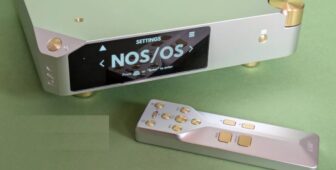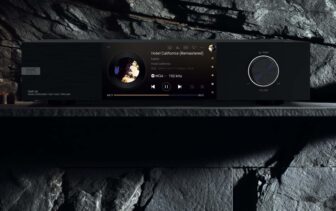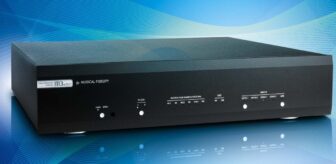McIntosh D1100 Review
McIntosh’s “Digital Preamplifier” D1100 makes no compromises: Analog inputs simply no longer exist. Instead, the American offers everything necessary on the digital level. Plus a powerful output stage.
By Roland Kraft
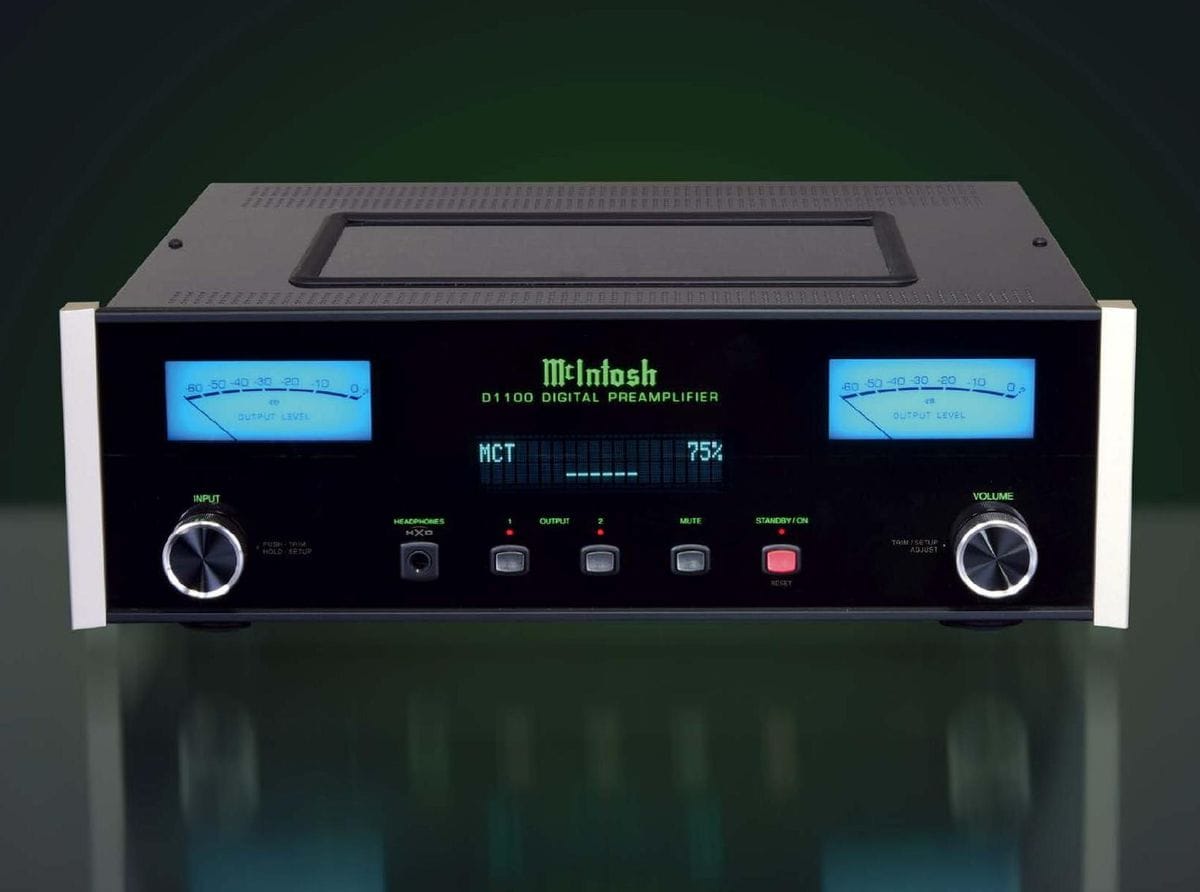
What is this McIntosh: a DAC or a preamplifier? The question of which device category the D1100 belongs to is answered by the famous New York traditional manufacturer with a decisive “both.” But we’d like to gently disagree…
Digital-to-analog converters with one or more digital interfaces, i.e., inputs, are almost old hat now and have undergone numerous variations: for example, being offered as portable, compact headphone amplifiers. Or, the other extreme, appearing as hefty, standalone high-end DACs. For a long time—that was before headphone DACs—the D/A converter was seen as an independent device, serving as a link between a digital source and a purely analog preamplifier or integrated amplifier.
That has thoroughly changed because a fully digital chain right up to the speaker outputs is no longer uncommon today. The DAC has adapted to all these changes in various forms, up to its quasi-abolition, which manifested as a simple additional option on the connection panel of an integrated amplifier.
The computer as a source also brought the DAC another indispensable input in the form of the USB port, which remains the only interface for digital audio formats outside the PCM spectrum.
In the further evolution of converters, the idea of installing a volume control was quite obvious, as many of the necessary integrated components inherently offer volume control on a digital level. But this often results in reduced resolution and very limited driving capabilities if you only use the standard outputs of common converter chips. Thus, a small DAC could also fill a big gap: namely, the one left by a full-fledged preamplifier.
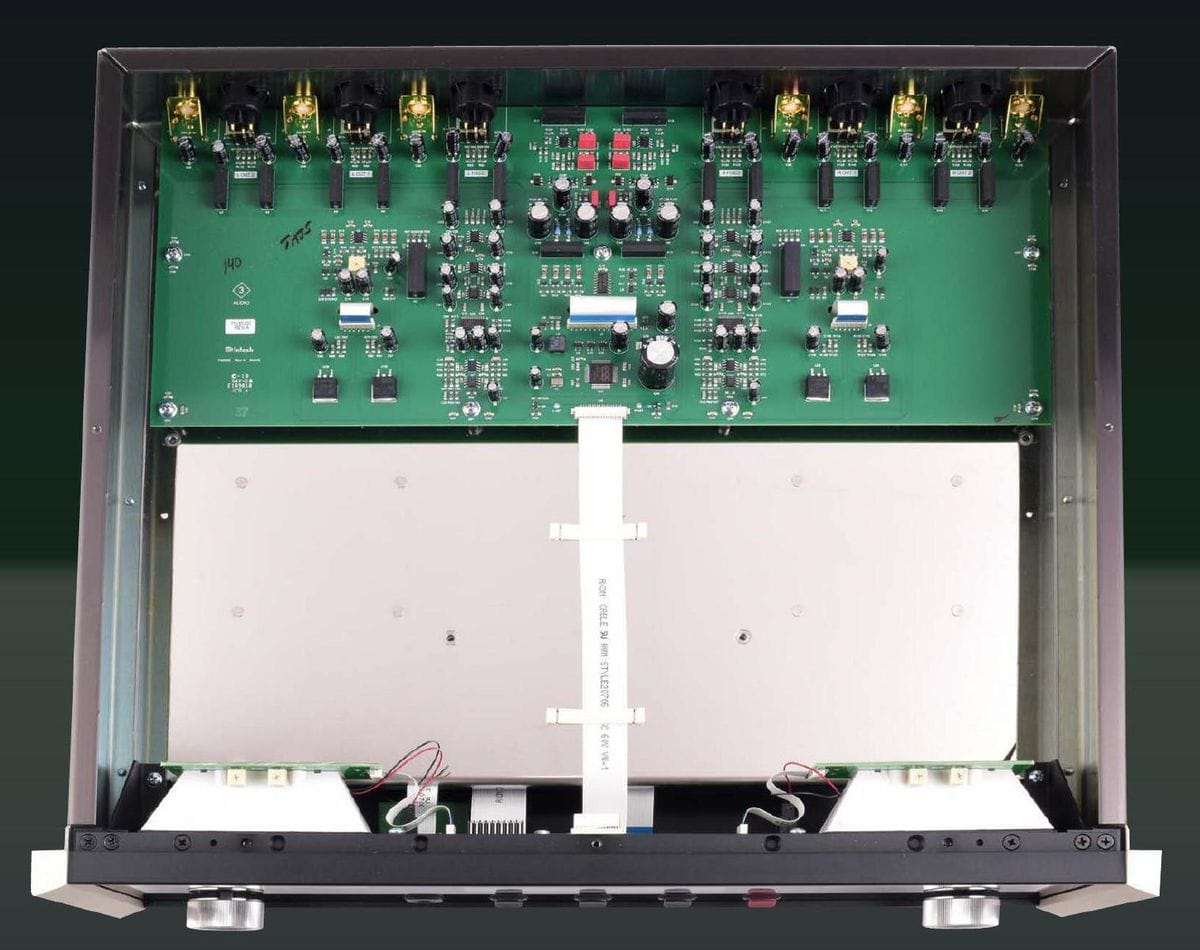
Principally, the D1100 is built in dual-mono technology to improve channel separation. On the upper level are its powerfully designed output stages, two of which are equipped with volume controls. The operating system allows the naming and presetting of all inputs. Updates are possible at any time via USB stick.
The sonic result is often impressive due to the simple shortening of the signal path when the loads to be driven are undemanding and high-impedance. However, if long cables, power amplifiers with 1-kiloohm inputs, or parallel-connected loads, such as subwoofers, are involved, the situation can look quite different despite mathematically still acceptable impedance ratios. Remember: Powerful output driver stages are the be-all and end-all of a good preamplifier.
DAC with Driver Stages
And that ultimately brings us to the McIntosh D1100. It implements the ideas of a hybrid, namely the purely digital “DAC preamplifier,” impressively consistently. It combines a D/A converter section of pure high-end quality with very powerfully designed output stages and adds a high-quality volume control on an analog level—a technique now frequently used to avoid any loss of resolution when aiming for good sound.
McIntosh combines this design with utmost consistency: There are no analog inputs, period. This becomes understandable when you consider the Americans’ combination suggestions: In teamwork with the two-part tube preamplifier C1100, you could build a three-part dream preamplifier, in which the D1100 DAC is integrated into the operating system of its analog partner. By the way, few manufacturers understand as well as McIntosh how to seamlessly integrate all devices of an installation under one user interface.
Practically unbeatable, the unmistakably designed high-end amplifiers are also excellent in terms of user assistance, with large-format wiring diagrams always included; even absolute newcomers to the subject can therefore connect their McIntosh correctly. Exemplary!
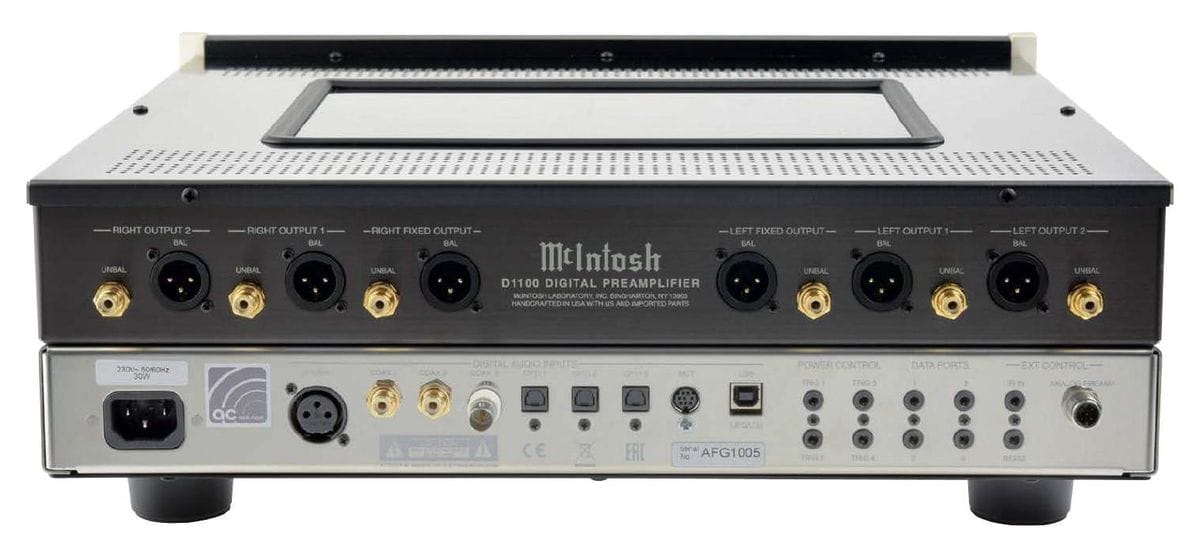
Networked: Four data ports and four trigger connections for switching other McIntosh devices on and off enable the seamless integration of the D1100 even into larger systems. In combination with the two-part tube preamplifier C1100, you could create a three-piece reference preamp, where the analog and digital sections are practically completely separated.
But back to the D1100, which, in addition to an impressive array of various digital inputs, boasts three analog outputs. The XLR sockets assigned to each unbalanced output throughout demonstrate that fully balanced amplifier stages are used starting from the converter section. And since the current/voltage converters behind the actual converter chip already operate with phase separation, only a multi-channel DAC can be used here.
That is the case because, in what McIntosh calls the best converter technology ever used by the company, a brand-new 32-bit eight-channel converter chip works, used here per channel in “Quad Balanced Mode,” offering the best conditions for real fully balanced operation. This also makes HD operation on the PCM level possible via the standard S/PDIF digital inputs, with a maximum resolution of 24-bit and a sampling frequency of 192 kHz.
Via USB, the D1100 accepts current DSD and DXD audio formats, including DSD128 and DXD with 384 kilohertz. A McIntosh-specific feature is a socket labeled “MCT,” serving for the digital connection to the SACD/CD drive MCT450, which can pass DSD64 from SACD copy-protected to the D1100.
Variable and Fixed
With its three outputs, which are also individually switchable, the McIntosh offers plenty of connection options. If the fixed-level output is used, the D1100 acts as a DAC to a preamplifier or integrated amplifier. If, on the other hand, the other two regulated outputs are used, the flexible device serves as a preamplifier with powerful driver stages.
In both cases, the two blue backlit meter needles are operational—nowadays an anachronism, but one with incomparable charm. So, even turning on the D1100 becomes pure joy, something less common with rather “black-box” hi-fi components.

Through a kind of chrome-metal rim, McIntosh manages to make the simple plastic remote control appear high-quality.
This typical McIntosh feeling has lost none of its fascination over the years. This also applies to the good old rotary knobs, which are functionally and tactilely far superior to any touch panel and the usual touch buttons.
A very important feature of the McIntosh is undoubtedly its large display, also kept in blue, behind the front glass panel. Both the volume and the data format are displayed here, readable from a great distance, proving once again that the US designers have done their practical homework. The solid and heavy chassis—with McIntosh, two such housings, still originating from the tube era, are practically stacked—gives the impression of being built in a tank factory.
Powerful Bass and Full-Bodied
In terms of sound, the D1100 may even present a big surprise for die-hard McIntosh fans. It almost seems as if the designers have managed to distill all the well-known sound virtues of the American traditional brand into their purest essence once again. This means, among other things, a rich, powerful, and deep black bass and foundational tone, which one could attest to having a touch too much “meat on the bones” without guilt. But it sounds so incredibly sexy, especially since the preamplifier doesn’t proceed in a restrained or sluggish manner.
The fact that these voluptuous curves neither cover up delicate, smooth mids nor a bell-clear, unembellished high-frequency spectrum is the next surprise. For this powerful, voluminous, and yes, self-confident sound still seems neither unbalanced nor one-sidedly “heavy,” but rather springy, lively, and directly engaging.
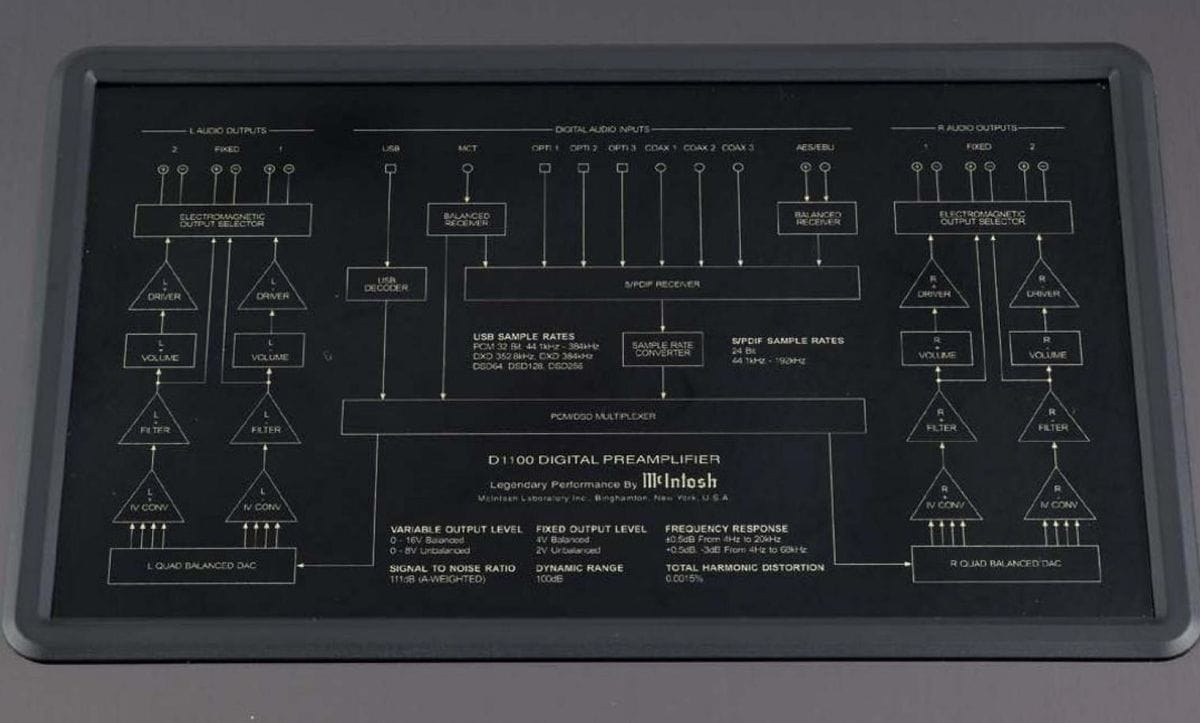
Typical McIntosh: On the top side of the solidly built housing, a schematic diagram describes the functions of the D1100. It doesn’t skimp on features and additionally offers a high-quality extra headphone amplifier as standard.
Not least, a deep black background with a distant horizon may contribute to this, possibly resulting from excellent noise immunity and low interference. The measurement analysis certifies the McIntosh newcomer exceptionally good data, further supporting the sonic impression.
To the delight of its listeners, the digital preamplifier boasts an exceedingly large, orderly soundstage, offering a wide scene noticeably beyond the speaker spacing. The American doesn’t place its musical strokes too far or diffusely to the rear but preserves directness, presence, and almost tangible tones filled with vibrating energy.
By now, the proverbial weighty suspicion arises that McIntosh may have raised the bar higher with this new device than potential competitors from its own product range might like. For us, one thing is certain: This is the best McIntosh we have ever had before our eyes and ears.
Highly Recommended and Dreamy
This also means that the new converter technology used here seems to be reference-quality good. The D1100 achieves the sonic surprise even with “simple” 16-bit/44 kHz data, which is probably the best news about the newcomer. It is highly recommended as a pure DAC and simply dreamy as a preamplifier.


